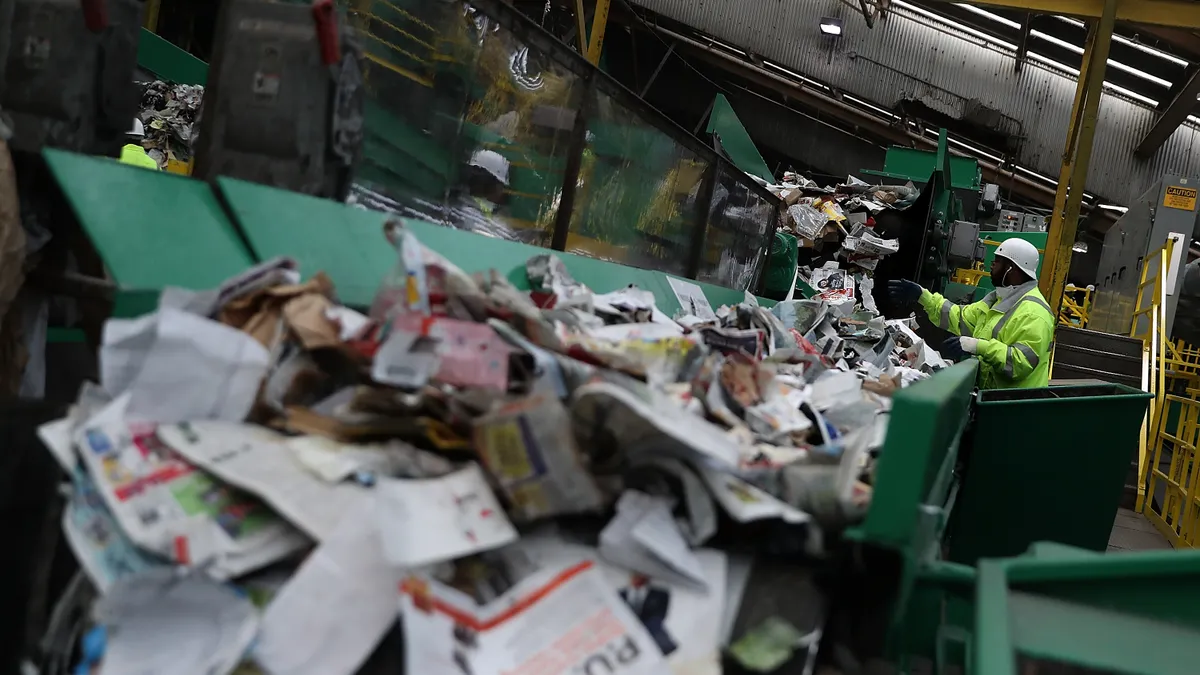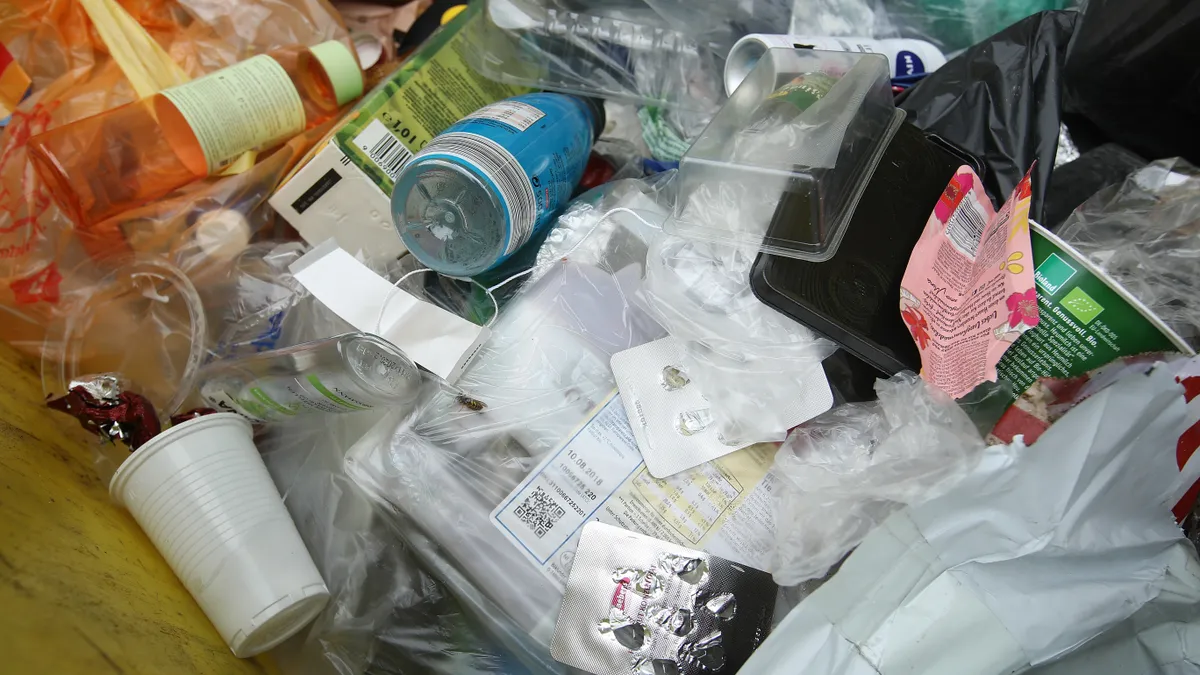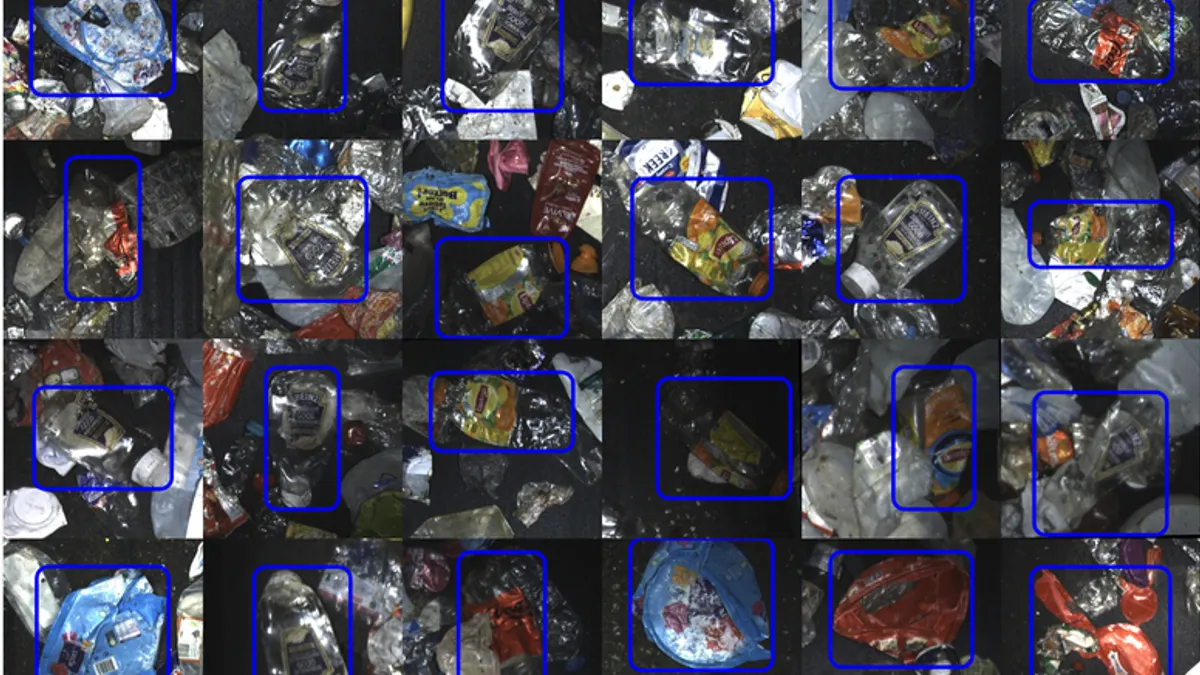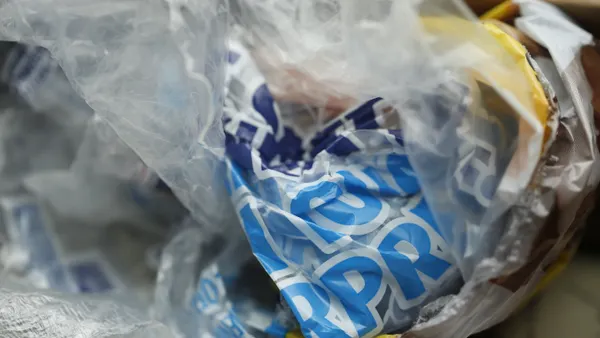Though companies are taking more interest in chemical recycling projects than ever before, clear guidelines to assess a project’s potential environmental, health and economic impacts are lacking, according to speakers at a Nov. 17 Product Stewardship Institute webinar.
More research could help address the issue, but the waste and recycling industry must also recognize that chemical recycling is not a monolith, the speakers said. The term encompasses a set of diverse technologies creating a variety of outputs.
Conversations about specific technologies and their impacts could help states make more informed policy decisions when considering how or if chemical recycling fits into extended producer responsibility legislation, speakers said. Here are some takeaways from the event:
More specific language could lead to more precise policies
According to a report from Closed Loop Partners, more than 40 companies are working on chemical recycling projects in the United States as of late 2021.
The chemical recycling industry “is incredibly diverse, not only from a technology standpoint, but also from the business operations standpoint and the different business decisions that operators will make in the market,” said Paula Luu, senior project director at CLP’s Center for the Circular Economy.
Each of these different approaches may have a different economic viability, and depending on the technique used, may require varied policy measures, she said. As chemical recycling continues to evolve, so should policies, she said.
One area where the industry must be more specific is when choosing terminology for different chemical recycling approaches. The plastics industry calls the technologies “advanced recycling,” while some experts prefer to refer to the specific technique used, such as pyrolysis, gasification or chemical depolymerization.
The Institute of Scrap Recycling Industries’ catch-all term for the variety of chemical recycling processes is “non-mechanical recycling,” but that term only applies when the process is creating new plastic as an end product, not fuels or other non-plastic outputs, said Cheryl Coleman, senior vice president of sustainability. ISRI’s position is that plastics-to-fuel projects shouldn’t count as recycling. During the webinar, speakers from Closed Loop, PSI and state governments agreed.
Making room for chemical recycling considerations in legislation
States are already devoting time and research to chemical recycling and its implications for law and policy. It’s a critical component of the EPR for packaging conversation in Connecticut, said Tom Metzner, environmental analyst for the Connecticut Department of Energy and Environmental Protection. The state last year failed to pass an EPR for packaging bill, but he’s confident the legislation could come up again next year.
“It’s clear that chemical recycling is one of the issues that we are going to have to deal with in our legislation,” he said. Should an EPR for packaging bill pass in the state, regulators will need to be prepared to consider whether chemical recycling techniques could play a role in managing packaging at its end of life.
“If the stewardship organization wants to propose chemical recycling, they will have to prove that that is the better environmental outcome. But we don't have standards to which to comply,” he said.
DEEP has been clear that it doesn’t consider chemical recycling manufacturing, a classification 20 states have adopted by passing American Chemistry Council-backed laws. The laws generally classify chemical recycling facilities as manufacturing facilities instead of disposal facilities.
PSI says the reclassification is “antithetical” to its model EPR for packaging legislation. Incineration and “waste to fuel” or “waste to energy” technologies should be considered disposal, not recycling, it says in its report.
Oregon’s policy on chemical recycling relates more to how the technologies fit into available methods for processing or disposing of plastics and other materials, said David Allaway, senior policy analyst for Oregon’s Department of Environmental Quality. Oregon passed an EPR for packaging law in 2021, and “one of the elements of it is that producer organizations have an obligation to ensure that all materials collected for recycling are managed responsibly,” he said. Oregon’s policy is that mechanical recycling is “preferable” to chemical recycling, “but there are cases where both will be better than landfilling,” he said.
More research could help quantify chemical recycling’s total impacts
Oregon’s policy on chemical recycling is informed partly by data from a recent life cycle analysis, though it’s only one piece of the puzzle when it comes to creating good policy, Alloway said.
Oregon DEQ’s life cycle analysis for expanded polystyrene, for example, shows that mechanical recycling overall requires less processing than chemical recycling, and mechanical recycling uses less energy, he said.
Closed Loop has also analyzed different chemical recycling strategies, and “mechanical recycling in all instances that we've evaluated has a smaller footprint,” Luu said.
Ongoing research and data collection must also take into account the impact chemical recycling could have on neighboring communities, said Veena Singla, a senior scientist at the Natural Resources Defense Council. This is especially true for communities that already experience overlapping health or environmental impacts from other industrial facilities that may be built in the same areas as chemical recycling plants, she said.
“Polluting industries get concentrated in structurally disadvantaged communities,” she said. NRDC generally considers many of the chemical recycling projects in the U.S. to be greenwashing, and Singla said more evidence is needed to show that new or expanded facilities won’t create environmental and health concerns such as air pollution.
“From a public health perspective, we really welcome any technology that contributes to a more circular, non-toxic material cycle and doesn't impact environmental justice communities,” she said. “But the information we have indicates that current chemical recycling technologies don't meet these goals.”
Assessing environmental impacts likely will be a big part of Connecticut’s EPR conversation, Metzner said.
“We're trying to assess the information we get from all stakeholders, assess the political landscape, and figure out what kind of bill is best for human health and environment that we can actually get passed,” he said.



















